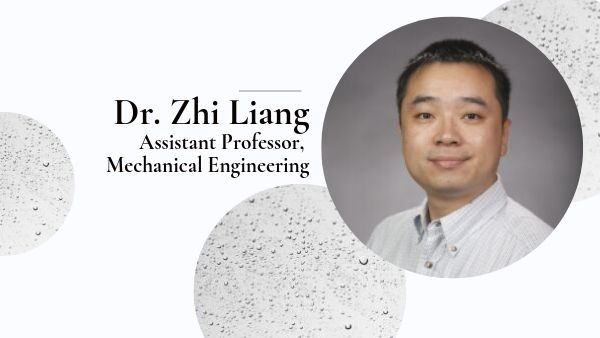|
Lyles College of Engineering’s assistant professor of mechanical engineering, Dr. Zhi Liang, was awarded two National Science Foundation (NSF) grants totaling $552,474 over the course of three years.
“These awards will allow me to conduct the research I enjoy, while supporting and training Lyles College of Engineering students continuously for three years,” Liang said. “This will ensure students have enough time to learn fundamentals in the research area and obtain publishable results.”
Both grants will provide educational opportunities for underrepresented high school students in the Central Valley, train Lyles College students to conduct research in micro/nanoscale heat transfer, and help guide students to doctoral programs in STEM fields.
The goal of the first grant “Thermal Transport across Liquid-gas Interface” is to use numerical and theoretical methods to study the evaporation rate of liquid droplets, particularly micro/nanodroplets to understand different conditions.
“For example, if a cup of water is sprinkled on the ground, water will evaporate much faster on the ground than in the cup due to the significant increase of the total area of water-air interfaces,” Liang said.
“Evaporation and condensation of micro/nanodroplets are of great importance to a variety of applications in industry. For example, evaporative fogging has been widely used for efficient cooling of gas turbines, and understanding the evaporation phenomena of micro/nanodroplets is also important in super-fine inkjet printing in which the printing material is deposited on the substrate mainly by ink evaporation,” he said. “For more efficient use of micro/nanodroplets in these applications, it is essential to accurately predict the evaporation/condensation rates for these small droplets.”
The second grant is titled “Understanding the merging dynamics of surface nanobubbles and the resulting capillary force between particles from molecular simulations.” The goal of this project is to use numerical simulations and theoretical models to understand the merging dynamics of nanobubbles and the resulting capillary force between adjoining particles.
“Due to their unique properties, nanobubbles are extremely useful in a broad range of areas such as water treatment, bioremediation of groundwater pollution, surface cleaning, and the growth of plants and fish,” Liang said.
He adds that, according to preliminary market research conducted by the Fine Bubble Industries Association, the size of the nanobubbles business is projected to increase from $20 million in 2010 to $4.3 billion in 2020.
“The modeling results will enable practitioners to develop strategies for enhancing the flotation rate of fine/ultrafine mineral particles and to improve removal rates of contaminants in processes such as wastewater treatment, surface cleaning and recycling of paper,” he said.
|


